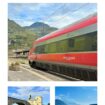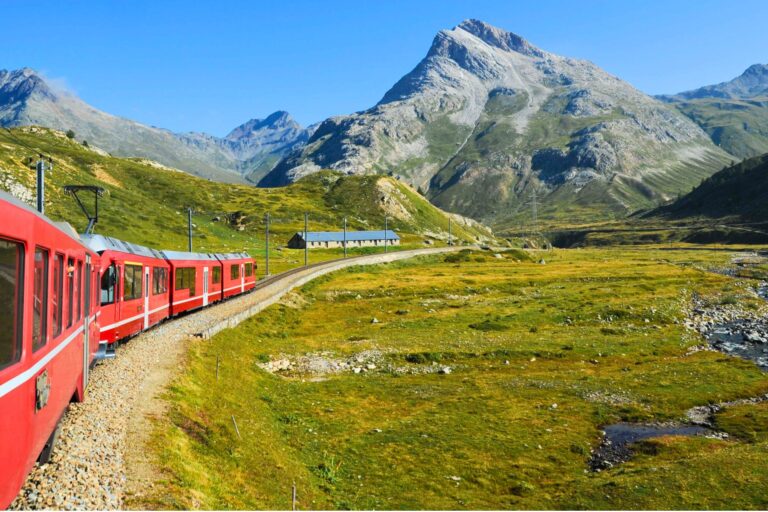
We are reader-supported and may earn a commission on purchases made through links in this article.
I grew up with a photographer as a mother who I directly blame for giving me such a vicious case of the travel bug. Stunning photos of the world were peppered all over my childhood home, causing an inescapable bout of daydreaming each time.
I was twelve when my parents took me to Europe for the first time. We spent a few days in London and a few days in Paris. That was my first taste of train travel. I was so beyond excited that we could not only take a train between the two cities but that it could go underwater. I soon learned that there were trains all over Europe and that you could go virtually anywhere by train.
This redefined a new goal for my future, one that I had the pleasure of accomplishing this past month. I was able to travel Europe by train and it was one of the best experiences I had ever had. Read for my one-month Eurail itinerary and for my experience using a Eurail pass.
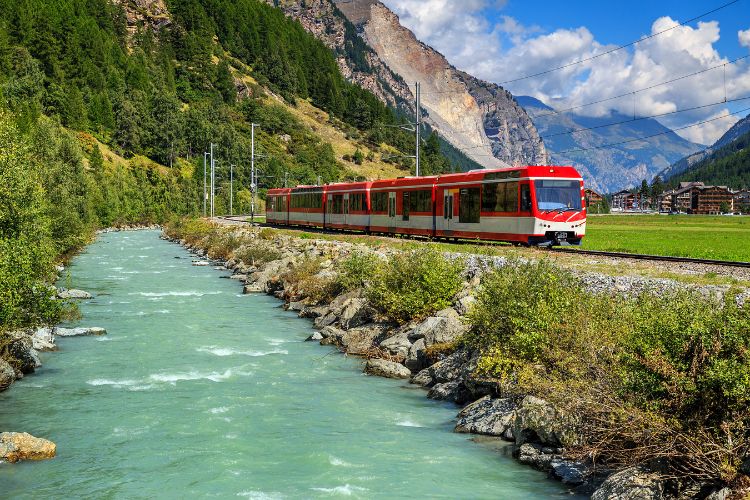
What is Eurail?
Eurail is a company that allows non-Europeans to purchase an all-in-one train ticket with access to nearly all trains across Europe. The best part is that it allows for so much flexibility in your journey which is hard to have with air travel. Their intuitive website makes it so easy to plan a trip (or leave it open-ended), browse passes and make seat reservations for your journey.
Check out my article where I outline everything you need to know: How to Use Eurail to Travel Across Europe: A Eurail Guide
In this article, I will tell the story of my own personal journey using a Eurail pass for a month, visiting eight countries and 18 cities. I will briefly tell you about each destination I visit, the journey to get there, and the misadventures along the way.
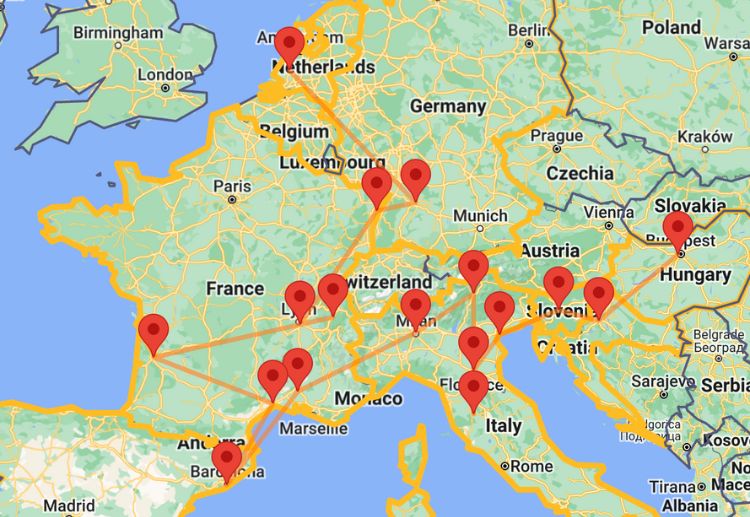
My One-Month Eurail Itinerary
Rotterdam, The Netherlands -> Stuttgart, Germany -> Strasbourg Lyon, France -> Annecy, France -> Bordeaux, France -> Montpellier, France -> Barcelona, Spain -> Avignon, France -> Milan, Italy -> Bolzano, Italy -> Siena, Italy -> Bologna, Italy -> Venice, Italy -> Ljubljana, Slovenia -> Zagreb, Croatia -> Budapest, Hungary
I embarked on my solo adventure in October 2023, armed with no more than a Eurail pass and a suitcase. I had done some planning ahead of time just because I did have some places I needed to be by certain dates. I’d be starting in the Netherlands and ending in Hungary, so I just had to figure out the middle. The possibilities seemed endless. I spent entire days using Eurail’s Trip Planner feature to craft my Eurail itinerary and explore all my options.
It came together piece by piece. My friend invited me to visit him in Germany, which I knew would be a good starting point. Annecy, France was also high on my list. The rest of the Eurail itinerary formed around other destinations I have always wanted to go to as well as cities I never heard of before – some that I can’t wait to go back to. I did a mix of larger more popular cities and smaller lesser-known cities. This allowed for such a diverse experience.
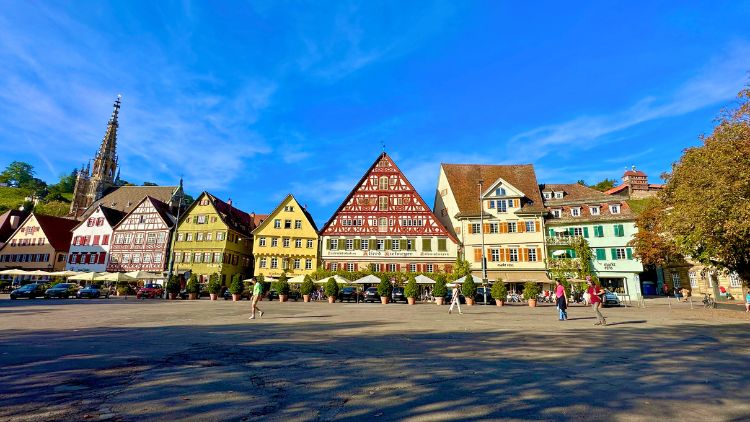
Stuttgart, Germany
My first stop was the city of Stuttgart located on the western side of Germany. I traveled from my friend’s apartment in Rotterdam to the train station. I got there 45 minutes early because this was my first day of using my Eurail pass and I wasn’t quite sure how everything worked. In the Netherlands, some train stations require you to tap your pass before you even get inside. Be sure to have your pass ready in case this is the case at your station.
Once you’re in, every train station I’ve been to has a screen listing all the departures and their corresponding platforms. Although, some of the friends I made along the way said this isn’t always the case is less visited destinations in Eastern Europe and the Balkans. My friend said that in Bulgaria the platforms aren’t listed, few people speak English, and the trains are extra slow. Expect each country to be different.
Day One Train Hurdles
In order to get to Stuttgart, I had three transfers which definitely tested my capabilities. When checking the app, look at the last destination listed, not your stop. That may not be common knowledge for those not familiar with trains. I successfully made it on the first train, but I overestimated the time I had at the next station.
As I waited in line for food, I glanced down at my watch and to my surprise it was five minutes after the train had left. Panicked, I quickly searched for the next available train, which luckily was about an hour away. Since I didn’t have reservations, I could hop on any train. Most mistakes like this are reversible. It helps to be cognizant of when the next train is in case you miss your first one. I also found trains in Germany to be consistently late, confirmed by my German friend.
I finally arrived in Stuttgart, quite a few hours later than expected. Stuttgart is an industrial town with smaller charming towns peppered around it. My friend and I visited the town of Esslingen, which was a delightful little down situated in a valley decorated with canals and castles. That night, we went to Stuttgart’s version of Oktoberfest, known as Cannstatter Volksfest. This was certainly the highlight during my time in Stuttgart – one of the most unique experiences I’ve ever had.
Read More: Experience Another Kind of Oktoberfest: Cannstatter Volksfest
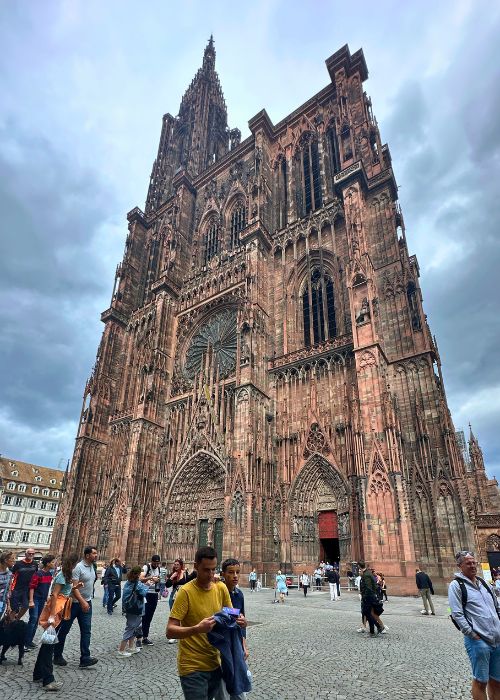
Strasbourg, France
My next stop was the border town of Strasbourg located in Eastern France. I only had two transfers on my train journey there, both of which went smoothly. Known for its mixed German/French influence, the town is small but rich with culture and history. Strasbourg was a stopover destination for me, so I didn’t have much time to explore. I did, however, have a couple of hours to roam around the city. In the center square is one of the most gigantic churches I ever seen, especially compared to the rest of the buildings.
That night I stayed in a hostel, which was far outside of the city, making it difficult to go back out. Wherever you stay, pay special attention to the location because that can greatly impact your experience.
Read More: How to Survive and Thrive in Hostels
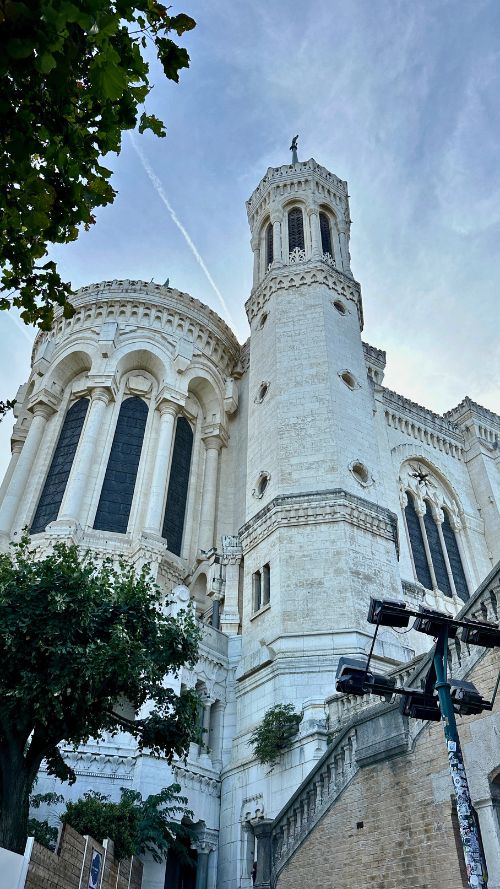
Lyon, France
My next stop was the second biggest city in France: Lyon. It was relatively easy getting from Strasbourg to Lyon because the train was direct. Although Lyon has some similarities to Paris, it has its own unique character. It is far more manageable and has a distinct and incredible cuisine. When I was in Lyon, I stayed in a hostel somewhat close to old town. The receptionist at the hotel recommended Le Laurencin for affordable authentic Lyonnaise cuisine.
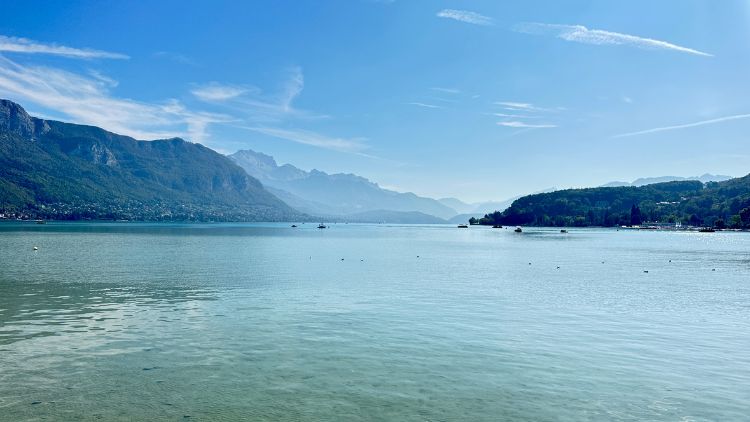
Annecy, France
The train from Lyon to Annecy was also direct, which made the travel experience so much easier. If you’re able to rig a way to get a direct train, even if it’s not at the perfect time, I’d recommend that over a journey with several transfers.
Annecy was the most beautiful place I have ever seen. Located on the east border of France, Annecy is located in the French Alps on a beautiful turquoise lake. I spent two nights here in the hostel Auberge de Jeunesse HI Annecy. I spent my days eating cheese, exploring the canals, and lounging by the lake in the sun.
Read More: Discover the Dreamy Town of Annecy in the French Alps
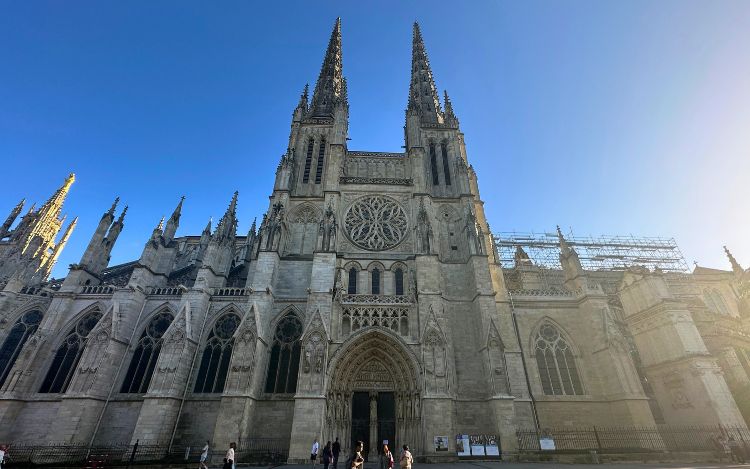
Bordeaux, France
The train from Annecy to Bordeaux was one of the most challenging journeys I had. It was ambitious to plot an eight-hour and 30-minute journey to begin with. At this point, I thought I’d be a train whiz. This journey included three transfers.
For previous journeys, I relied on getting some food at the station before boarding the train, but this time I didn’t have enough time. The first leg of the journey was two hours, which wasn’t horrendous. I believed that I would have time to grab a bite to eat at the next train station in Grenoble. When I got there, I only had 20 minutes, which was barely enough time to get to the next platform. It didn’t help that the Grenoble train station had nothing but a vending machine. I would have to wait for the next station, three hours away, to get something to eat.
The Horrors of Transfers in Paris
Finally, I arrived in Paris Gare de Lyon, where I had the most difficult transfer I’ve ever had to make. I had one hour and 15 minutes to get from Paris Gare de Lyon to Paris Montparnasse. The time quickly evaporated within the chaos of the transfer. From Gare de Lyon, it was very difficult to find the metro to get to Montparnasse. When I finally found the metro, I saw the long daunting line behind the ticket counter. Remembering I had a metro ticket from my previous trip to Paris, I dodged the line, praying that the ticket would go through.
I inserted the ticket only for it to be heartlessly rejected. My heart stopped. I knew I wouldn’t have time to wait in the long line to get another ticket. In complete panic, I sneakily slipped behind another person to get into the metro.
I got through only to realize that this was one of two barriers. I’d have to sneak through another barrier and consciously commit another minor crime to get to where I needed to go. There was no going back. After standing there petrified for about five minutes, I knew I had to make a move. I ran through the barrier after this one guy got through, my backpack getting trapped. I tore myself through and finally got to the right metro line.
Navigating the Hot and Crowded Paris Metro
This was one of two metro transfers I had to make, and I barely made it on. The metro was beyond packed – likely violating fire code. I crammed myself and my baggage on board and within seconds I felt a heat and humidity that was worse than my parent’s place in St. Pete, Florida. I thought it was strategic to wear all my jackets and warm clothing during travel – less space taken up in the bag. This was not a good idea when nowhere in Europe has AC. I was stuck on this hellscape of a metro for 15 minutes. I felt sweat beading up on my face and I kept pinching myself, praying I wouldn’t pass out.
Finally, I was able to transfer to the other metro, which wasn’t remotely better. These are the moments where time felt extra long – where the heat amplified the horrors of transport. I glanced at my watch in fear. At this point, I was barely on time.
The Enormous Gare Montparnasse
I made it to Gare Montparnasse and was utterly terrified by its mere size. I scrambled, looking for the nearest board dictating where my platform would be. Of course, it wasn’t listed, even though it was departing in 20 minutes. The station was so enormous that I didn’t even know what wing I was supposed to head towards. I shed all the layers I was wearing, completely drenched in sweat. I stood there for about five minutes in complete shock.
Finally, the platform was announced and I walked 10 minutes to find it. Once I was there, it took another 10 minutes to get to my train car on the complete opposite side. This is the disadvantage of reservations – it adds time to find your correct seat. Some trains are so big it takes a long time to find the right train car.
I was on the correct train, the last leg of my journey. It would only be two hours until I was in Bordeaux. The train that said there would be no WIFI actually had WIFI – a blessing considering I had some work I needed to do.
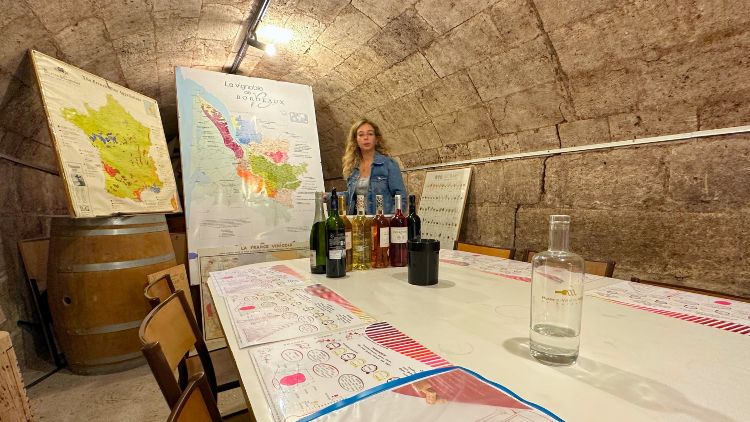
Warm October Weather, Walking, and Wine
I finally landed in Bordeaux. It was 80 degrees Fahrenheit in October which was shocking. I had a 15-minute walk to my hostel which felt more like 15 hours after the day I had.
Bordeaux was a gorgeous city that I gave myself an entire day to explore. The best way to explore Bordeaux is to just walk around and get a feel for the town. There is a beautiful river to walk along. You can spot landmarks from the river’s edge and further explore based on what intrigues you. After all my travels, this is my favorite way to see a place.
I ended my day at the Musée du Vin et du Négoce (wine museum) – a place that included a tour of wine and its significance in the region as well as a wine tasting at the end. If you’re a student, it only costs five euros for the whole thing.
My advice – avoid the transfer between Gare de Lyon and Gare Montparnasse unless you have ample time (at least two hours).
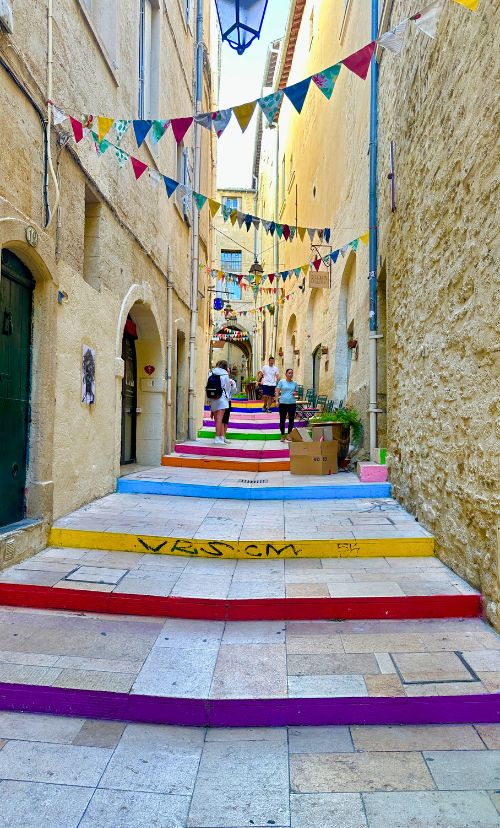
Montpellier, France
Although the train to Montpellier was direct, I nearly missed it. This was not a result of me being late. I got there half an hour early but the platform never appeared on the screen. I tried asking someone in the vicinity what was going on. They looked me up and down in disgust and refused to respond. This was the first unkind Frenchman I’ve encountered during my entire visit to France. By this point, the train was set to leave in two minutes so I knew I was screwed.
I bolted to the nearest help station which wasn’t terribly easy to locate. On another note, it was appallingly impossible to find a pain au chocolate in the entire station. A disgrace.
I finally came across an assistant who directed me to platform 12, where the train was still parked. I ran for my life and was able to board the train. It took another 20 minutes before the train left. During this time, I checked my email. I saw one that stated my train was canceled and that they apologized for the inconvenience.
Fortunately, the next departing train was only half an hour after my original booking, but it accommodated both the earlier train and the train I was booked for. It all went well, but another piece of advice I have is to check your email both the night before and the day you embark on your journey.
Montpellier is one of the most underrated towns to visit in the South of France. Located right on the ocean, this hilly town is stunning and filled with beautiful parks, restaurants, and cultural sites to visit.
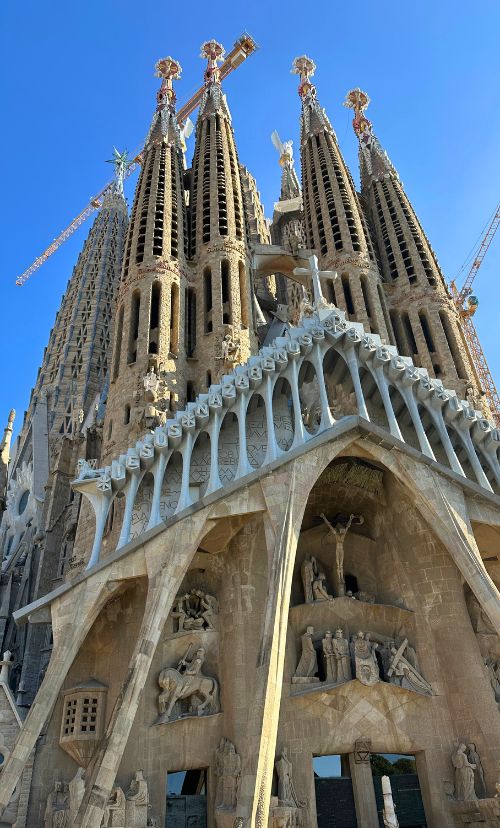
Barcelona, Spain
I chose Montpellier as a stopover because it offered a direct train to Barcelona and my hostel was only a three-minute walk to the station. This made for an easy breezy travel day with no major hiccups. I had no problems with my journey between Montpellier and Barcelona. In three hours’ time, I was there.
Barcelona was an unforgettable destination on my journey. It was partially because of the amazing hostel experience I had, and partially because of the destination. Barcelona is a stunning city with so much to do. The nightlife is superb and has amplified the entire experience. I highly recommend the hostel OneFam Les Courts. It was the most fun I’ve ever had at a hostel.
Read More: 5 Things to Do in Barcelona
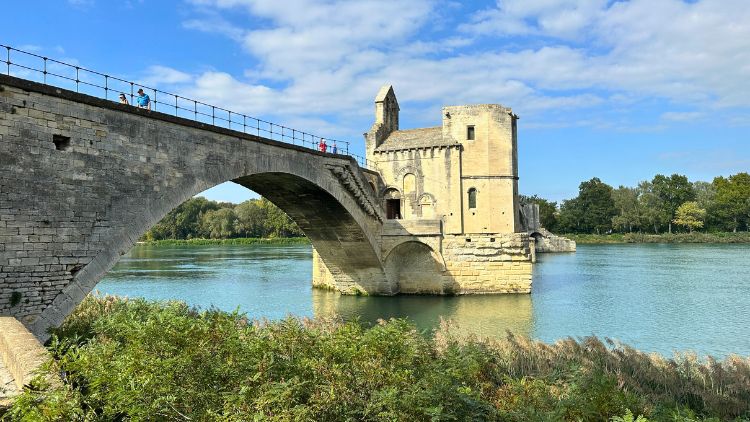
Avignon, France
The journey from Barcelona to Avignon took about five hours and had two transfers. The most stressful part of the journey was the train station in Barcelona. Not only was it gargantuan, but it was very confusing. I wasn’t quite sure where I had to be.
Then, I saw what appeared to be security – something I hadn’t seen in any other train station. The line was a mile long, and I had to board my train in 15 minutes. The system was stressful but I finally was able to board, almost forgetting my phone in a bin at security. Some stations may have security, so it helps to do research ahead of time so you know what station you might need extra time for.
I arrived at an adorable studio apartment in Avignon and finally had a break from hostel life. Hostels are a glorious concept but it can wear on you after a while. This studio apartment was a very similar price to what a hostel would’ve been and about half an hour’s walk from Avignon.
Unfortunately by this point, I felt a dreaded sore throat come on. It was perfect that I had a space to myself to hack my lungs out in peace. The cold worsened each day for an irritatingly long time but I was crazy enough to still go out all day and explore each place.
Avignon is a walled city in Southeastern France on the Rhone River with beautiful architecture and an interesting history rooted in medieval times. Some highlights include the Palais des Papes, a massive Gothic palace, Pont Saint-Bénézet (or Pont d’Avignon), a famous medieval bridge, and of course the amazing cuisine. It’s hard to go anywhere in France and find bad food.
Milan, Italy
My decision to go from Avignon to Milan was a bold one. Planning the nine-and-a-half-hour journey on my computer felt like a hypothetical rather than something I’d actually be enduring a month later. When the moment arrived, I was furious with my previous self. Rightfully so, because it was one of the toughest journeys yet. I had to be in Italy by a certain day, so I had no time to break up the journey.
If you type in this route on the Trip Planner, you’ll find that there is no easy way to get from Avignon to Milan without a horrendous amount of stops or going the opposite direction you’d need to go at some point. I had to rig this one with the help of a Eurail customer service expert and even had to book seat reservations on a train’s independent website (as opposed to directly on Eurail). The moral of the story is that booking this particular journey is a horrible idea and I don’t recommend trying it yourself. Stop in Switzerland along the way like a sane person.
Milan itself was a stopover location for me so I saw very little of it. I had a late dinner, crashed in the worst hostel I ever stayed at, and pried myself out of bed for another long travel day. Oh, and the entire time my cold was only getting worse.
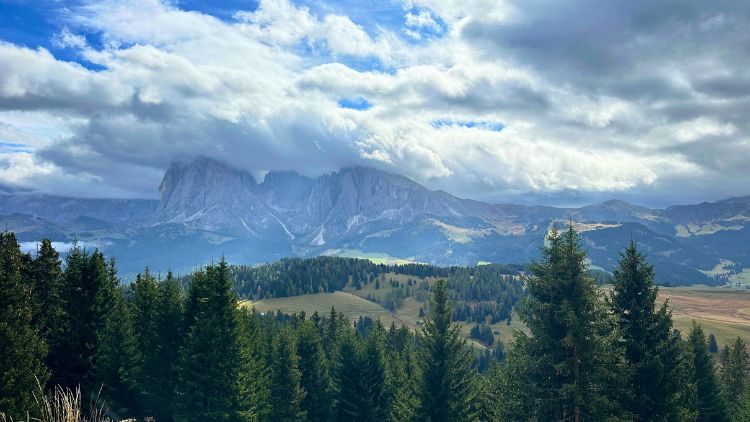
Bolzano, Italy
I was delighted to have finally arrived in the South Tyrol region of Italy, one that is so underrated for American tourists. The journey there was smooth sailing with no mishaps.
South Tyrol features the breathtaking Italian Alps, with the most famous range being the Dolomites. Both the towns Bolzano and Merano are worth visiting and are good base points to explore the area. I was lucky enough to stay at Priedlhof DolceVita Resort and ADLER SPA Dolomiti, both prioritizing the fusion of wellness and nature. Bolzano is the best way for Eurail pass holders to get to South Tyrol. From there, you could take busses to other parts of the region to explore.
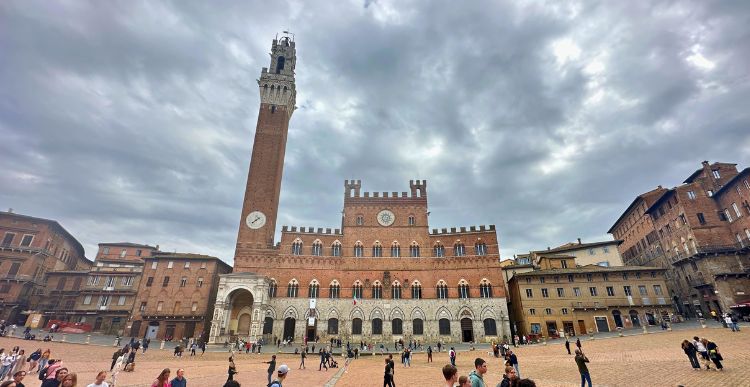
Siena, Italy
The five-and-a-half-hour journey to Siena was a piece of cake compared to my other experiences. Siena was beautiful, rightly named after the color it was seemingly painted. All of the buildings were a soft reddish brown placed in three-dimensional terrain. There were quite a few hills in Siena that I did not expect.
My hostel was pretty far outside the city – about a 45-minute walk. Once I was there, I wanted to stay the entire day so I didn’t have to do that trek more than once. I spent my day my favorite way – just roaming around.
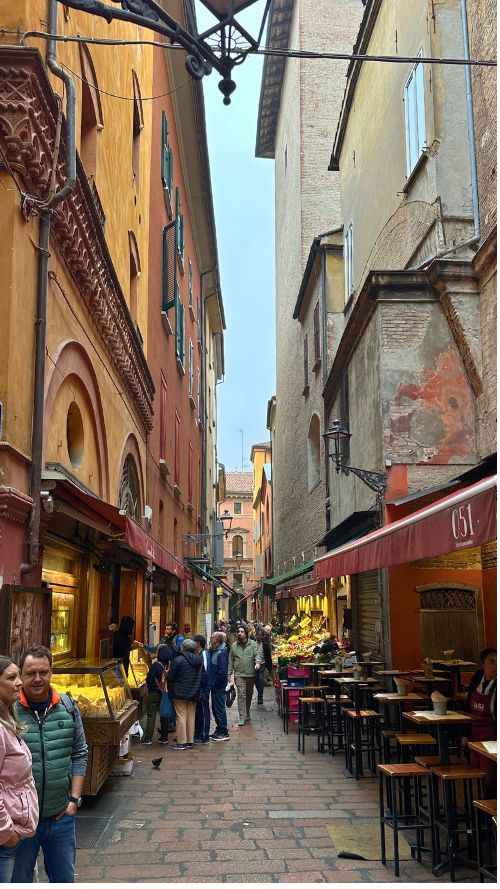
Bologna, Italy
It took two hours and 40 minutes to get from Siena to Bologna with only one transfer. This far in the journey, I felt like a train travel expert. I was a well-oiled machine, able to immediately find the platform display, grab a bite to eat, and find the platform. My strength became Hulk-like after days of hoisting luggage up and down stairs, through crowded stations and across cobblestone streets.
I only spent one day in Bologna which left me craving more. My primary mission was to taste the legendary Bolognese sauce in its very birthplace. I hiked thirty minutes to a restaurant called Trattoria Tony recommended to me by the receptionist at my hostel. Soon, a giant slice of lasagna alla bolognese was put in front of me and I devoured it alarmingly fast.
Apart from the amazing food, Bologna is a special place to wander the streets. There are lively alleys and corridors that seem to go on forever filled with shops, restaurants, and laughter. There are plenty of beautiful piazzas, the most famously being Piazza Maggiore with beautiful structures like the Basilica di San Petronio and Palazzo d’Accursio.
Read More: 48 Hours in Bologna, Italy
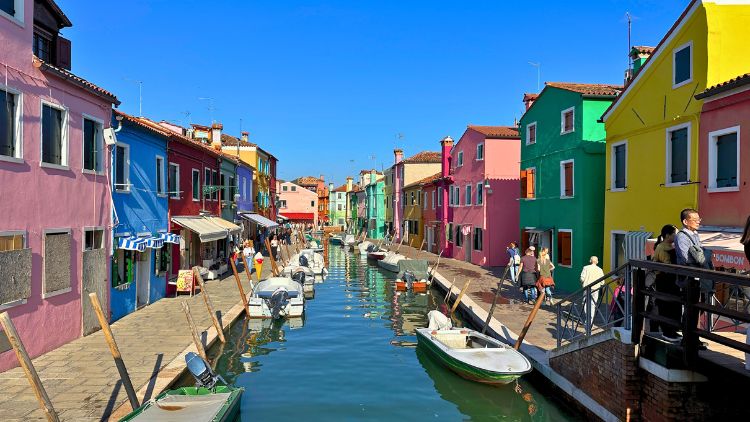
Venice, Italy
The train ride from Bologna to Venice was likely the easiest journey I had yet. After an hour and a half of bliss, I arrived at the Venezia St. Lucia station – only it was the wrong one. I carelessly booked a hostel that wasn’t directly on the island of Venice. It was in Mestre, a 15-minute train ride away. My hostel, Anda Venice, was conveniently three minutes away from the train station so it all worked out beautifully. This was an important lesson learned – book the correct station. Big cities could have multiple stations – some very far out of the main station. Do your research when deciding on the train you want to take.
Venice is a slice of heaven that’s as romantic as they say it is. There are few other places with canals practically in place of roads. I recommend taking a gondola ride to get the true experience. My favorite part about Venice is the island of Burano, an idyllic place with buildings of every color. I took the ferry over there (most are discounted with your Eurail pass) it took about 40 minutes. Once you’re there, I recommend getting gelato and strolling the colorful streets. Burano is known for lace making so a visit to the Lace Museum is also worth it.
Read More: Venice, Italy Unveiled: The Ultimate Guide to the Top 10 Experiences in the City of Canals

Ljubljana, Slovenia
I had some issues getting to Slovenia because I got on the wrong train by accident. I was waiting in the designated platform but the train never showed up. Thinking it was just late, I waited a little longer. It arrived five minutes later. I boarded and it took me about ten minutes to realize I was on the wrong train. Panicked, I got off and figured out a way to reroute my journey – highly dependent on short transfers which was stressful.
Once I got to Ljubljana, I was immediately charmed. I had no idea what to expect. Ljubljana was a city that I had never heard of before let alone one I could pronounce (it’s loo-bee-aa-nuh by the way). This city was incredibly beautiful, located on a slow-moving river. The trees were changing colors and you could smell chestnuts being roasted at every corner. There are castles to visit, markets to explore, and amazing tours to take.
Suggested to me by two ladies I had a spontaneous dinner with, I took a walking tour of the city and it was one of the best tours I’ve ever had. The tour guide, Minka, gave us tastes of unique Slovenian food along the way including a unique pastry called prekmurska gibanica, rosemary white chocolate, and even bear salami. We also learned about the troubled history of Slovenia, architecture, and my personal favorite: 24-hour milk machines. Every day, machines are filled with fresh unpasteurized milk. The milk that isn’t purchased is then converted into cheese. There are 24-hour cheese, egg, and yogurt machines as well. We got to taste the milk and it was by far the most amazing I’d ever had.
I booked this tour through GuruWalk which offers many free walking tours in cities all over the world. This tour cost 10 euros which is beyond worth it for what you get. Book this tour here.
Read More: Top 10 Things to Do in Ljubljana, Slovenia
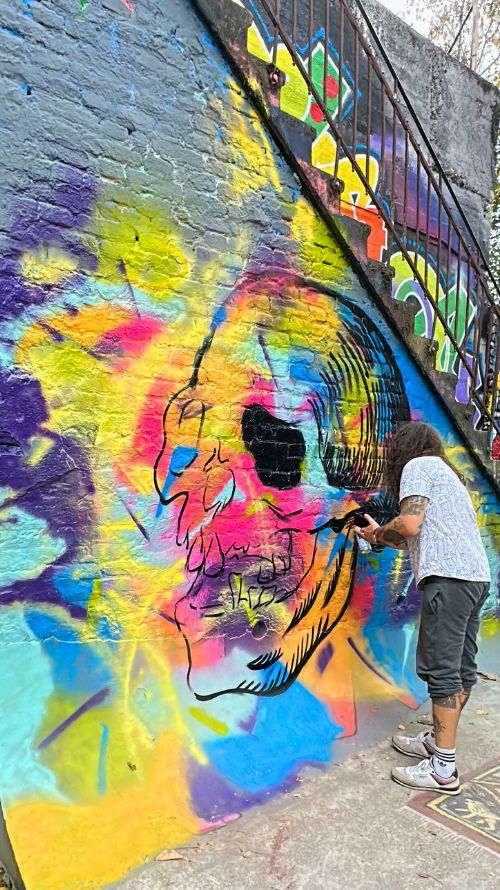
Zagreb, Croatia
I was having way too much fun in Ljubljana that I had a hard time tearing myself away. So much so that I had to sprint for twenty minutes in the pouring rain to catch my train. I miraculously made it and I’m happy I did because that one train ride changed my life.
Within a few minutes of the train departing, I heard a lot of racket. I poked my head out and saw that there was a film crew. I got so amped because I went to film school. I’m pretty sure they were cursing my name because I kept taking a peek at what they were doing.
Finally, I found an opportunity to ask what they were filming and funnily enough they were doing a Eurail promo video. I told them I was writing an article for Eurail and twenty minutes later I was invited to act in it. I happened to be in Zagreb for the same duration of time that they were and spent my two days there acting with another girl in the video.
The experience was unforgettable and fulfilled my secret fantasy of getting randomly cast in a video. Part of the experience included a street art workshop which was one of the best parts.
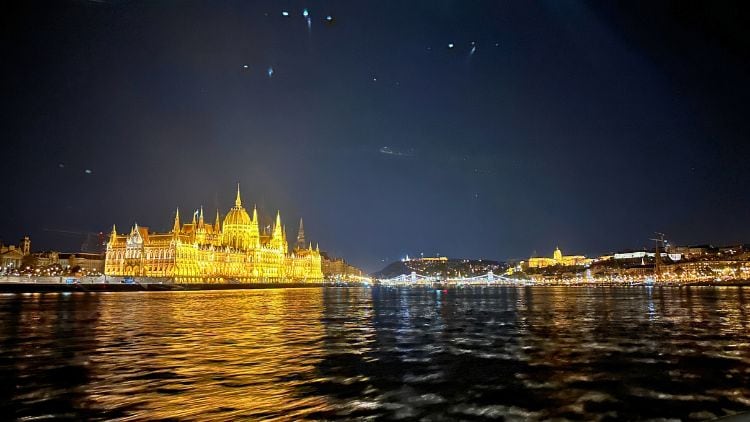
Budapest, Hungary
My final stop on my Eurail itinerary was the one and only Budapest, Hungary. The five-hour journey was painless and sentimental. I spent the whole time fantasizing about where I wanted to go on my next Eurail adventure.
After being solo for so long, I met up with some close travel buddies in Budapest. The highlights were eating eggs benedict at Horizont Café, dancing in Szimpla Kert bar, an unlimited Prosecco night cruise on the Blue Danube, and the iconic Széchenyi Thermal Baths. Budapest is a culturally rich paradise with stunning buildings that glow at night filled with great nightlife and amazing food. This destination is far worth the visit.
Read More: Budapest on a Budget: Unforgettable Adventures in Hungary
Craft Your Own Eurail Itinerary
- How to Use Eurail to Travel Across Europe: A Eurail Guide
- Buy Your Pass
- Eurail Testimonials
- Trip Planner
- Help Center
- Types of Trains
- FAQs
Read More:
- Summer in Cherry Creek North: Denver’s Upscale Urban Oasis - June 26, 2025
- Switzerland Bucket List: 10 Epic Adventures You Can’t Miss - June 17, 2025
- 10 Best Places to Spend the Fourth of July in the USA - June 16, 2025

